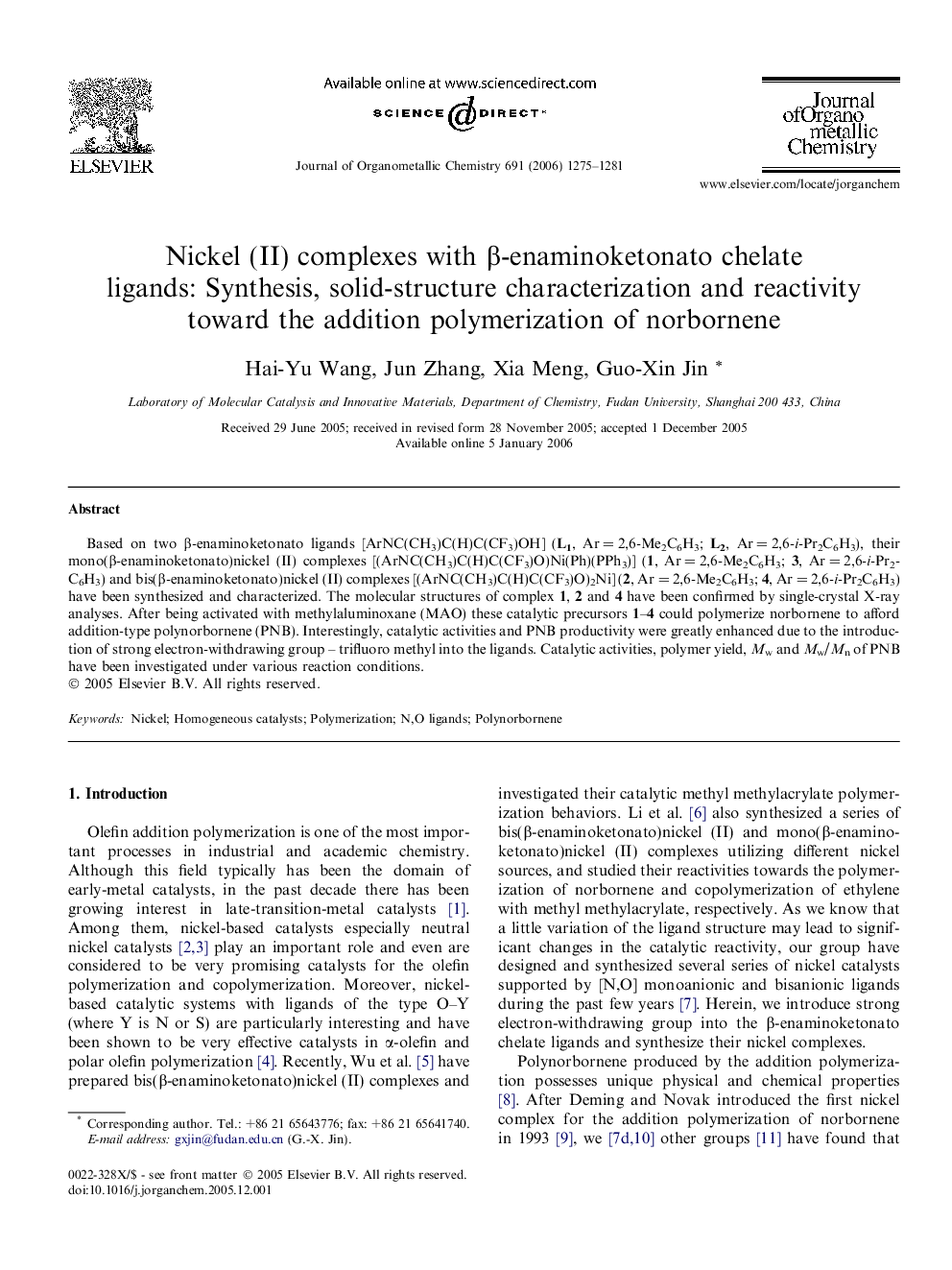| Article ID | Journal | Published Year | Pages | File Type |
|---|---|---|---|---|
| 1328606 | Journal of Organometallic Chemistry | 2006 | 7 Pages |
Based on two β-enaminoketonato ligands [ArNC(CH3)C(H)C(CF3)OH] (L1, Ar = 2,6-Me2C6H3; L2, Ar = 2,6-i-Pr2C6H3), their mono(β-enaminoketonato)nickel (II) complexes [(ArNC(CH3)C(H)C(CF3)O)Ni(Ph)(PPh3)] (1, Ar = 2,6-Me2C6H3; 3, Ar = 2,6-i-Pr2C6H3) and bis(β-enaminoketonato)nickel (II) complexes [(ArNC(CH3)C(H)C(CF3)O)2Ni] (2, Ar = 2,6-Me2C6H3; 4, Ar = 2,6-i-Pr2C6H3) have been synthesized and characterized. The molecular structures of complex 1, 2 and 4 have been confirmed by single-crystal X-ray analyses. After being activated with methylaluminoxane (MAO) these catalytic precursors 1–4 could polymerize norbornene to afford addition-type polynorbornene (PNB). Interestingly, catalytic activities and PNB productivity were greatly enhanced due to the introduction of strong electron-withdrawing group – trifluoro methyl into the ligands. Catalytic activities, polymer yield, Mw and Mw/Mn of PNB have been investigated under various reaction conditions.
Graphical abstractNickel (II) complexes with β-enaminoketonato chelate ligands (1–4) have been synthesized and characterized. Complexes 1–4 can be used as catalyst for the addition polymerization of norbornene in the presence of methylaluminoxane (MAO) as cocatalyst in high activities.Figure optionsDownload full-size imageDownload as PowerPoint slide
